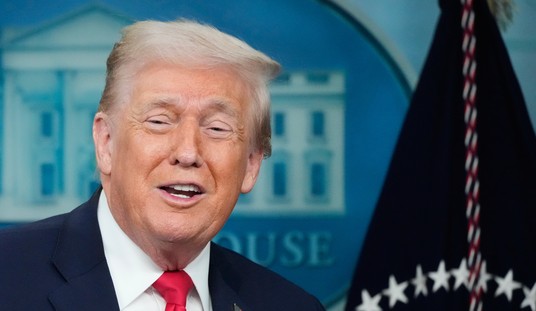I initially thought I would write this as a VIP piece, but decided not to because everybody in the world should celebrate the courage of Dr. Jay Bhattacharya.
He, along with a few of his colleagues and far too few journalists and politicians, was willing to stand up to the COVID-industrial complex and focus on what science did and could tell us about a pandemic ripping through the world’s population and what was being done (and not done) to deal with it.
Bhattacharya, along with Dr. Martin Kulldorff of Harvard University and Dr. Sunetra Gupta of Oxford, stood up to the mob made up of academics, journalists, and the pharmaceutical companies (yes, these elites behaved as a ravening mob, not responsible policy makers dedicated to saving lives) and spoke truth to power. Their Great Barrington Declaration helped crystallize the opposition to COVID tyranny.
Bhattacharya is a Stanford University professor whose work focuses on epidemiology. These three, each a professor at a premier institution of higher learning, suffered from a multi-year smear campaign led by Drs. Anthony Fauci and Francis Collins. They led a charge that resulted in the shunning of three of the best epidemiologists in the world.
No good deed goes unpunished.
Fauci, whose expertise is in bureaucratic politics and distributing research grants, did his best to destroy the careers of these men he called “fringe epidemiologists.” Fauci redefined fringe, and the entire Establishment went to work destroying them.
Colleagues at Harvard (@MartinKulldorff) and at Oxford (@carlheneghan) wrote to defend my position. Grateful for these brave scientists who were willing to tell the truth in the face of an unreasoning mob.https://t.co/JaLzlANHs8
— Jay Bhattacharya (@DrJBhattacharya) December 3, 2023
It was an effort that worked in the short term. Fauci and Collins were able to perform their social science experiment of shutting down the world’s largest economy on an unwitting public, while Bhattacharya suffered slander and death threats. Even many of his colleagues turned on him.
This story has yet to end, though. A decade from now, Fauci’s reputation will likely be in tatters, and Bhattacharya is already hailed as a hero by people who know the truth. Justice may never be done, but the reputation of the COVID-sane have already recovered.
I am focusing on Bhattacharya because he has borne the brunt of the criticisms and has been more willing to speak out against the campaign to destroy his reputation. I do not want to downplay the courage of his colleagues who stood up to the cancel mob, including Kulldorff and Gupta, or any of the others who bucked the Establishment, to tell the truth as they saw it.
I just think Bhattacharya is in a class by himself.
I’ve written about Bhattacharya several times before, but I was inspired to write again because he is opening up about what he faced from his colleagues at Stanford. He has been a focus of interest in the Twitter Files, having been censored for telling the truth. He has testified before Congress on censorship and the failed policies pushed on their citizens by ignorant and arrogant politicians. And he now has a podcast with Rav Arora that is well worth subscribing to.
Over the past few months, though, he has taken aim at the failings of academia. Rightfully so, given that academia played an essential role in distorting COVID policy and censoring inconvenient speech. Ironically, one of the most important centers pushing internet censorship is based at Stanford.
One of the striking things about the response to COVID is the fact that the government put almost no effort into doing studies, especially randomized controlled trials, during the pandemic. It is almost as if their goal was to remain as ignorant as possible about the disease and the policies pushed on the public.
This lack of curiosity led Bhattacharya to conduct the first study on the actual prevalence of COVID-19 in the population and its actual infection fatality rate. One would think that this would be vital information to inform public policy–before his study, the government was claiming a stratospheric IFR of 3%-5%, while Bhattacharya’s study pegged it closer to 0.2%, with almost all the fatalities concentrated in easily identified groups–in particular the elderly.
Bhattacharya took from this the obvious: focus your efforts on protecting those at risk.
This IFR has since been confirmed, but at the time, Dr. Bhattacharya suffered slings and arrows for downplaying the virus’s danger. Telling the truth was not welcomed.
In a recent piece, Dr. Bhattacharya spoke about how much was done to suppress his scientific work and speech. It paints a frightening picture indeed. Far from celebrating the scientific work Bhattacharya did to pin down COVID’s IFR, Stanford turned on him.
The study arrived shortly after much of the world had imposed an extraordinary lockdown – “two weeks to flatten the curve” – that shut down ordinary life for countless people. The Santa Clara study results had several enormous implications for the lockdown strategy:
- The Covid virus had spread to at least 2.8% of the population after only a little more than a month of its arrival in the U.S. and despite the lockdown;
- Most who had been infected and recovered had not come to the attention of public health authorities, and nearly 40% recalled no symptoms;
- Infection fatality rate (IFR), or chance of infected people dying, was much lower than previously thought; and
- The pandemic had a long way to go before the end, and nearly everyone would become infected.
Many experts – especially those who had insisted a lockdown was necessary – did not want to believe these major implications.
My colleagues and I faced an unprecedented attack in the media and by some vocal scientists, who questioned the results and even our good faith conduct. This attack took place very publicly on Twitter and in some particular media outlets, like the now-defunct BuzzFeed News.
What remained hidden until now is that Stanford University administrative leadership intervened and interfered with the study in ways that violated accepted standards of academic freedom and harmed our ability to convey and defend our research findings. I believe their actions were partly motivated by a financial incentive to develop and sell antibody tests and partly to protect the Stanford University brand against media criticism. Violating academic freedom harmed public health policy, reverberating throughout the pandemic and continuing to this day.
Academic freedom is one of the most vital principles in public discourse because the alternative allows only the least informative and most anodyne speech–the sort of speech that supports whatever the powers-that-be believe or will tolerate. But t we get closer to the truth only through challenging received opinions. That is how knowledge gets produced and science gets done.
Bhattacharya documents in his latest piece how Stanford threw the concept of academic freedom out the window, at least partly for pecuniary reasons.
I won’t go into the details because this piece is already long, and you should read Bhattacharya’s longer one anyway. Still, the bottom line is that from the start of the COVID-19 pandemic, politics and money drove policy, not science.
In some ways, it was worse; some of Bhattacharya’s colleagues called on Stanford to censor him for not toeing the line.
Open scientific discourse is especially critical during a public health crisis such as a pandemic. Academics should be free to pursue knowledge wherever it may lead, without undue or unreasonable interference. It is deeply troubling when scientists try to limit rather than engage in scientific debate.
Last week, anonymous posters with the portrait of Stanford University Professor of Medicine Dr. Jay Bhattacharya were plastered on kiosks around the Stanford campus, linking him to COVID deaths in Florida. Even though cumulative age-adjusted COVID mortality is lower in Florida than in most other large states, these smears appeared.
Taking it one step further, the chair of Stanford’s epidemiology department, Professor Melissa Bondy, circulated a petition among faculty members demanding that the university president exercise his obligation “to clarify for the faculty the limits of public pronouncements when proclaiming on public health policy.”
The petitioners are upset that “several Stanford faculty members have publicly advocated for policies for others that are contrary to those the university has adopted” and that “these recommendations are disturbing and contrary to public health standards; they foster uncertainty and anxiety and put lives at risk.”
The epidemiology department chair called on the university to shut up one of her colleagues for disagreeing with her and others.
Science. This is not how it is done. Guess who turned out to be right.
Few were willing to buck the Narrative. Dr. Jay Bhattacharya is one who did. He, along with his all-too-few brave colleagues, is a hero. If only people had listened, we would be much better off.









Join the conversation as a VIP Member